 | ||
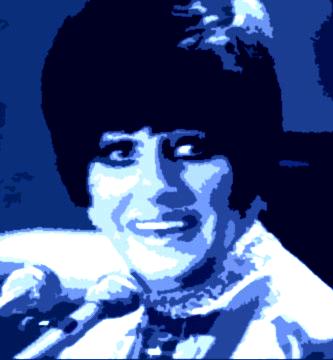 | ||||
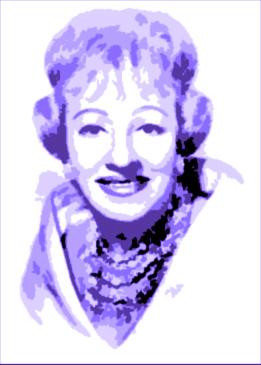 | ||||
MORE NEW DIRECTIONS AND LOOKS After the accident, Frances still worked when she could. She was booked for a series of residencies in Las Vegas, but at a different venue, naturally: "on April 10, 1959, Frontier reopened its casino and Cloud 9 Lounge to the public. In the Cloud 9 Lounge premier its headliner Frances Faye, the great double-entendre artist of the keyboard; Jack Costanzo, the world's greatest bongo artist, and The Treniers, acknowledged as one of America's most talented swing and rock groups" (Las Vegas Sun). Faye recalled, "I was playing at the New Frontier at Las Vegas. And I was crippled...and I played - I forgot I broke my hip. And Dietrich. She was playing at the Sahara. She never goes anywhere - she wouldn't go see a - forget it! And every single night she was out there, drinking beer - and when she saw them take me out after the show in a wheelchair, well - she went out of her mind! To think I played like that! And she gave me pills - they helped me so - she'd say, I'm going to bring you Fernando Lamas tomorrow - and I thought, 'Well, I didn't like that guy on the screen,' but then she brought me the pill, and it was called Fernando Lamas" (qtd. in Higham 66). Fran would later pay it forward, providing similiar aid to Judy Garland when Australian customs seized all her pills at the start of her disasterous tour leaving Judy dry but not high. Judy suffered an intense withdrawl unitl Frances rescued her with a new stash. But back to June '59, Louella Parsons reported that Faye, " opened Thursday night at the Crescendo, is still on crutches, but that does not affect her repartee" (NYJA 6-29). On New Year's Eve 1960 Frances was again featured in the Cloud 9 Lounge. When she would play that venue she was "backed by a full complement of 20 jazz all-stars ... Faye sang and played a a 14-foot grand piano that covered the front of the small lounge stage; the band was assembled behind her" (Mike Weatherford 10-13-60). Faye refused permission to move the piano, forcing other acts on the bill to play hidden behind the unsued behemoth. One notorious night one of those supporting acts just gave up trying to connect with the audience from the back of the stage and decided to set up and perform on top of Faye's enormous piano!
The early 60's were a very active time in Frances's career and social life. She toured, did TV and made those great albums for Verve. Russ Garcia and trombonist Frank Rosolino were good friends, it was Russ and Frank who brought Fran to Verve. Lily Pons was a close friend. Pons had made millions from her property investing. Fran took a technical course in real estate and invested in properites in California, Nevada and eventually Australia. Fran made a lot of money and enjoyed spending it on quality clothes, jewels, cars and was very generous with her family and sister-in-laws. Fran had "a new wardrobe for each nightclub season, usually made by the Californian courtier Jax," costing up to $30,000 (Tattersfield, 62).
In May of 1960, sporting a huge, almost platinum hairdo, Frances returned to Manhattan , "after a long absence" to open at Basin Street East to an "overflow opening night assembly." A few weeks later, it hit the press that "broken hip and all, Frances is breaking all records at Basin Street East, twice nightly and 3 times on weekends, she packs the room to capacity - drawing top names from stage, pictures, TV and even other nightclubs" (NYJA 5-20). Fran even surpassed Peggy Lee's celebrated record run at Basin Street East. Then in '61, "Hurricane Frances hit 'em hard... It was a ball - a fireball last night in Basin Street East. Frantic Frances Faye shouting her sophisticated songs in her torrid tempo and pounding a poor defenseless piano to a pulp" (Gene Knight, NYJA 2-10). Another reviewer raved, "Frances Faye hit the New York scene last night with the impact of a 10-ton truck smashing through a concrete wall" (NYJA 2-10). Very impressive for a 48 year old woman unable to walk! Just a month later she was perfoming in Miami, then in Chicago by late Spring. That summer Jack O'Brian reported that "Frances Faye, a huge hit in London was carried off to a hospital just before she was to star in a TV spot" (NYJA 8-16). A reviewer in Variety wrote that "Faye projects ... to all corners of the room to growing excitement and sustained approval that begins from the first number. She makes the big 750 seater an intimate room, turning the stint into one big house party" (3-8-61).
In March of 62, Fran was back again at Basin Street East, this time with Redd Foxx on the bill. During this period, she also worked with Dick Gregory, Don Rickles, Lenny Bruce. She had often shared the bill with comedians since the early 30's when she worked with Henny Youngman. It was part of Teri's job to get those bullies off the stage so Fran could perform her full set. Otherwise, they would take advantage of her and run over cutting into Fran's time. Faye's return to Basin Street (where else!) in September of 1964 would be her last New York appearance until 1975. It is evident that Frances didn't seem to slow down much at all during these years of physical agony. In '63 Frances was back at the second scene of the crime at the Thunderbird Lounge, but in 1961, a globetrotting Faye was booked at London's famous Talk of the Town and then she played one of her earliest of many dates in Australia.
Australia in the early 60's was a still very remote and somewhat isolated, so if Frances was a shock to 50's America you can just imagine how she outrageous she seemed there. But that is a quality Australians love, "In Australia, they're crazy about me. All I have to say is, 'I'll do my best to make him...' and the room is up for grabs" (Wilson 11-17-78). [During the Monica Lewinsky scandal a Sydney paper reflected its nation's spirit when it commented, "Thank God they got the Puritans and we got the convicts!"] Frances was a huge hit in Melbourne and at Chequers, Sydney's top club, "a smash act that had been held over for weeks"(David Smith & Neal Peters 22). "She is undoubtedly the most polished and professional act ever to broaden the minds and smiles of our night owls," raved John Laws in the Sydney Sun (6-10-62). Yet the carrot topped Faye sporting a 12-carat diamond ring, "her eyelashes frankly false, her make-up garish," had been nervous to open, "I was sick with fright, opening night. You won't believe me, but I really was sick, but that night was wild, really wild...I was terrified. I'd never been to Australia, and I didn't know if they'd understand me or not. The first night was astounding; it was jam-packed, every inch of the club was full; it seemed like everybody came from everywhere and cheered and cheered and I would take 15, 16, 17 bows; and when I had to go everyone in town came to the airport" (Newton 66, Higham 68).
Fran's routine in Australia was documented by Ron Saw, "...She still makes big money. How much she commands in Las Vegas or London or New York or San Francisco I don't know. But it is more or less reliably reported that she's making more than L3500 a week at Chequers. Every day about 2pm she awakes in her suite at the Chevron Hilton. She lies back in her bed trying to ignore the nagging in her hip and looks tiredly out over the city. She makes phone calls, writes letters unceasingly. Then about five the sad face begins to glow. She dresses, calls in her hairdresser, goes to work on her makeup. They eyelids turn green, the face orange, the lips red. The sun goes down in the west and rises in her cheeks and her eyes. The first show is at 7:30" (6-23-67). Chequers was the nightspot in which Faye dazzled the young Peter Allen in 1962. Over the top by nature, he was drawn to her like a magnet, "hers was an outlandish act, and Peter was, to put it mildly thoroughly smitten" (Smith&Peters 22).
Frances took in the starstruck kid and taught him tricks of the trade he would use his whole career. In the Smith/Peters book, Allen heaps praise on Frances. He recalls the late nights talks when she spoke at length about the mechanics of crafting an act, finding meaning in details and leaving room for improvisation, and self respect. He cheerfully confirms that she was in fact as wild as she said she was. She introduced Peter Allen to black music and he credits Fran for developing his style: "Frances would sit me down for these talks. She had a definite philosophy. About everything. I had never, ever met anyone like her...She smoked dope ... we would talk into the morning about performing. She insisted that you must know and do exactly what was right for you...Everything had to have meaning to Frances no matter how minor a detail. She showed me how to structure a show so that it meant something and you also had room to in it to improvise and play around...One of the wildest women I have ever met. She also didn't care what other people thought about her" (Smith&Peters 23). It seems Frances became a teacher after all.
Yet Faye was a shrewd woman and made sure she could please and audience far less liberal than she; "the hippest entertainer in square circles," according to Leonard Feather. "Hers is the perfect nightclub act," Ron Saw wrote in the Sydney Mirror after the opening. "It is probably the most profitable that Sydney night spots have ever known. She is a goldmine"' Bu t ... Frances Faye did not become a goldmine preaching to the converted. Faye broadened her appeal by in conservative times by operating from the wisdom that people think what the want to think...the object and the trick of it, keep them guessing" (MacLean 64-65). "In such nightclubs as Ye Little Club or showrooms such as Ciro's or Studio One's Backlot Theatre, she spun a web of music and off-color jokes in which she parodied her bisexuality while teasing her primarily heterosexual audiences" (Folkart 11-16-91). By mixing comments like "Gay, Gay, is there another way?" and "now, my ex-husband on sax" Frances appeased anyone's suspicions whatever they were (MacLean). Faye peppered her act with Yiddish and in Yiddish "gay" means "go"; so in fact some of the many Jews who came to see her might have thought "gay, gay, gay" was a play on words referring to her trademark call "go, go, go." Happy, homosexual, or go, Faye was content to let them think what they wanted. When asked about her audience, Faye put it like this, "if they are aware and alert and if they understand me and like me I am thrilled to death" (Over Easy). Frances worked tremendously hard and therefore carefully protected her reputation. In 1963 she and brother Marty sued Electra records and won a settlement that pulled a song off a Bob Gibson/Hamilton Camp album that lampooned her lifestyle. In the fall of 1964 Dorothy Kilgallen reported the engagement of and "amicable" break-up of Frances and Regina Records President, Jack LaForge. On televsion in 1977, an elderly Faye once again dismissed "rumors that she would remarry" yet still managed to keep them guessing by coyly saying, "with the money I make each week, a man could never keep me" (Over Easy).
On her 1962 tour down under, Frances also met Peter Allen's teenage castmate from the popular musical TV show 'Bandstand' Lana Cantrell. Lana performed with Frances in Sydney in both 1962 and 1963. Faye's profound influence on the still awkward and still brunette Cantrell was evident on 'Bandstand' where young Lana sang an exact copy of Faye's unique stylized interpretation to Faye's jazzy arrangement of 'Skip to My Lou' from the earlier Folksongs album. The suburban Lana handled well close recreations of Fran's arrangements of both 'Should I?' and 'Them Who Has Gets' from 'Swinging All the Way' on the hip program. The tunes were bold departures from the mainstream material Cantrell usually was offered and were definitely a stark contrast to the pop fare typically chosen for the show's target audience. An admiring, if not adoring, Faye sought to help the up and coming singer to find her own voice and boost her career by sharing both her rich Russ Garcia and Marty Paich commisioned orchestra charts and her very own spotlit stage with Cantrell. Teri later worked to secure some of Lana's first U.S. bookings and the couple hosted her when she first arrived in the States. "That kid couldn't even make a cup of coffee," Frances fondly joked. In a nightclub recording Fran's affection and generostiy for Cantrell is abundantly clear, "I want you to say 'yes' or' no,' doesn't Lana look beautiful this year? Lana, I've never had the lights taken off me when I'm on, but tonight for Lana I want them to make her look as beautiful as they can, isn't she beautiful?" Lana then did a spot on imitation of Faye before they dueted singing the lyrics "I'm so lucky to be loving you" from 'Time After Time.' In his book "The Boy From Oz," Stephen MacLean implied Peter Allen was used to faciliate a romantic outing for Teri and Lana. Fran was still using wheelchairs and canes but could get up to speed when chasing after Teri, MacLean noted.
Back in Australia again in 1964, Faye was there when the Beatles hit and Frances shared drummer Jimmy Nicol with the Fab Four when Ringo took ill. He was interviewed while touring with the Beatles in Australia as a temporary replacement for an ailing Ringo:
As the 60's progressed, Fran no longer appeared in New York but continued to play gigs on 3 continents. In addition to the Beatles' songs, she added new songs into her ever evolving act . One evening at L.A.'s Playboy Club a reviewer noted Faye opening with 'Bayou Country,' later singing 'The Look of Love,' then closing with a pair from 'Hair' - 'Aquarius' and 'Let the Sun Shine In.' 'Watermelon Man,' 'The Shadow of Your Smile,' 'That's Life' and a rocking version of the Beatles' 'Get Back' were other songs Fran frequently sang in the 60's, but never recorded. On the American TV show 'The Lively Ones,' Faye, Matt Dennis, Nellie Lutcher and Page Cavanaugh, were all found singing in their own inimitable styles the song 'Bye Bye Blackbird' live and in tandem on video feeds from 4 different cities. Then in the ambitious second half of the song, they were united onto the same jazzy arrangement to make it sound like they were singing together in one place - sort of like a mid century Zoom screen sharing performance. It all builds to a finale featuring super fast, short cues and cuts with Fran taking the final moment! She was in great voice and top form singing on the Joey Bishop and Donald O'Connor Shows. She joked, boldly incorporated her partner Teri Shepherd's full name into the lyrics she sang and had dyanmic big band arrangements of Bacharach and Gershwin tunes that deserved studio recordings.
As her recording career waned, Fran resumed her heavy touring schedule. She was back at London's Talk of the Town in '65, and finally debuted in Melbourne a few short months after Judy Garland was famously booed off the stage there. Variety reported, "near the end of her stint, Faye went into 'I'll Go My Way By Myself,' broke off and knowingly asked, 'Guess who last sang that in Melbourne?' then burst into her own version of 'Over the Rainbow'...Everything about the unpredictable American songstress and her act lives up to a legend that she's Australia's favorite entertainer from the U.S."(3-17-65). Author Stephen MacLean recalled hearing as a teenager on Australian radio a bold Frances Faye criticizing the treatment Judy Garland had recieved in Melbourne, rallying behind Judy when no one in the press would. In the film 'Chop Suey Club' Fran's partner recalled coming to Judy's pharmaceutical aid with Fran's pain pills Apparently, Judy's plane had touched down in Manila on her way home and Fran was playing there. Fran dispatched her girlfriend to assist with pills in hand. Garland would often show up at Fran's late night shows in the lounges of Las Vegas. Later, Ned Wynn documented a 3am encounter with Judy at one of Fran's performances in his autobiography and Stevie Smith included a few scenes of Judy with Fran in his unpublished autobiographical script.
By the mid 60's Fran once again was working a new look; "Five years ago she wore a carroty, tousled wig almost defiantly, as if to accentuate her plainness. Today there is a difference. Frances has eight wigs, all auburn and all modelled on the Vidal Sassoon cut. Her stage wardrobe - she buys a completely new one for each engagement - is mostly Dior, fitted silk sheaths covered with yards of swirling chiffon in a myriad of colors" (Newton '66). Under some of those dark wigs, Fran returned to Sydney again for another four years in a row starting in '65. Faye shined on her Australian TV Specials. In 1968, Faye was reviewed at Melbourne’s Lido by Variety, “The songstress...looked severe with a new hairstyle and dressed in black with a glittering jewelled neckline. She is backed by a small orchestra that works extremely hard for an artist who obviously demands a lot...somehow on opening night a certain amount of magic was lacking compared to her fabulous standout performances in this city three years ago. She certianly has an hypnotic power over her audience...Maybe this was an off night...Maybe Miss Faye wasn’t well (she made references to being ill but made it appear part of her act) However, Frances Faye below par is a great deal better than a number of lesser acts trying to give their best who have topped the Lido bill in the past” (8-15-68).
Entertainer Mark Trevorrow elaborates, “These Variety reviews are FACINATING, especially the '68 Lido one - I'm guessing she was maybe JUST passing her peak with this trip; at 55, after a pretty rough time healthwise, she was probably starting that inevitable slow decline in energy, and with it a resilience to touring. And you don't wanna KNOW Melbourne in August - windy, wet, FREEZING! - with the Lido a beat-up old timber/stucco 30s dance hall built out on the pier at St Kilda beach...in other words, Fran's dressing room would have been OVER WATER, and no doubt drafty as hell. And then again, if her opening nite audience was as THICK as the bunch at the TV recording, who can blame her for being off her game? Reviewers have absolutely NO IDEA that if an audience isn't 50% partners in a show, then you are pushing sh*t uphill (as we say down here). Opening night media crowd, needless to add, are the least generous in this regard - and (natch) they haven't even paid!” None the less, Later that week Faye’s Lido show was filmed and presented on Channel O as her second television special and Faye was in top form joking with the audience, generously praising and featuring her musicians as she always did on TV and singing many contemporary songs she would never record. Her hyper paced, uber energized "What Now My Love,“ rock inspired "Shimmy Like My Sister Kate," and rhythmic “Going Out of My Head” were highlights.
Author Stephen MacLean saw Faye perform at Chequers and The Lido. He met Fran backstage of the Lido and wrote: "Now that I was in the dressing room, Frances if I remember correctly, seemed a bit shocked by my youth in these sense that I was perhaps under-aged (which I was) and perhaps also porking the gent who had ushered me into her presence (I wasn't), perhaps imaging an unwholesome situation reminiscent of her old head waiter Angelo who was such an old bag and kept trying to make her since she opened (opened WHAT? I always wondered.) 'How OLD are you?' she demanded ... leaning against her dressing room wall which was covered by newspaper clippings of John and Yoko who had taken to their marital mattress for what they termed a Bed-in-peace protest in I think Amsterdam, 'A complete gas,' said Frances, defintely her kind of couple, and working in the nude - always a gas. Wanting to play a gag on the club owner, Frances Faye had a male guest pretend to be a journalist interviewing her, and timed it so that when her employer David McIlwraith tentered the dressing room he was shocked to hear the following - at FrancesFaye's prompting:
However, the food remark finally upset the owner, really upset him, and Frances became extremely sweet and contrite - in a tough kind of way - filling him in on the gag ... Then Geoff Brooke arrived with his wife, a local crooner and also restrauteur who'd just come from dealing with Marlene Dietrich who was having a late night steak chow-down at Geoff's swank eatery following her own show at the Princess Theatre (Melbourne was certainly hopping that night.) Mr. Brooke said Marlene had been a pig, a beat and a brute, insulting the staff and particularly infuriating them when the waiter showed Madame her wine prior to pouring it. 'I know what the f*cking wine is,' she'd snapped, 'I f*cking brought it here myself,' an apt observation,because in those days Melbourne had draconian liquor laws - to this day Australians by habit still wander round clanking bottles of wines, never daring to knock on a door without one.
Marlene's bad behavior in a touchy town like Melbourne which had already shown Judy Garland who was boss hovered in the air with the Melbourne restrauteur looking hurt, offended and just slightly dangerous - at which Frances Faye tactfully went to Marelene Dietrich's defense - sort of (in company, everything Frances Faye did seemed to have this ironic ambivilant 'sort of' quality to it)... Meaning Frances Faye told stories of her Las Vegas cavortings with Marlene Dietrich, shopping for pillows in a Vegas department store for instance. How Marlene the nightmare perfectionist had the staff lay out every pillow in the store - scores and scores of pillows from one end of the floor to the other - as Marlene moved around feeling each pillow VERY carefully testing them for quality then what seemed like hours later annoucing, 'They are all absolute TWASH!' before flouncing out making no purchase and with nary a bye your leave for the downtrodden sales staff, Frances limping along in her stead. 'But she's a great gal when you get to know her', Frances would add after each faintly insulting story, like the one about how Marlene had tried to save on room service costs at the Vegas Riviera, installing some gas rings to cook up her own witch-like food concoctions, 'But it turned out the gas rings burned into the floor and instead of saving money like she'd intended, it cost her a f*cking fortune because she had to pay to get the whole f*cking suite re-carpeted! Ha ha ha! That's Marlene, but she's a great gal when you get to know her.’ (Several years later I spent some time with Marlene Dietrich, her only island of rapport at probably her last press conference anywhere and I would concur with Frances Faye - along with Peggy Lee, the most intelligent performer I ever met, and full of cluey insights into the Australian psyche; she had it all worked out.)
But backstage at the short-lived Lido it was a Friday night and Frances Faye was in rattling good form. She spoke of recently attending the dentist in L.A. where the only other person in the waiting room was Ronald Coleman's widow, the old-guard socialite Benita Hume, Frances shocked to discover that a woman of her standing in the community had 'A lovely smile - but no teeth - she's at the dentist and she's got this one FANG hanging in the middle of her mouth.’ She was also particularly amused by one of her musicians, who, on a recent evening, had picked up, Frances Faye claimed, a female visitor to the club. A refined barfly type who had taken the musician back to the boarding house she lived in, terribly fearful that her landlady might hear her sneaking a man in, and a musician at that. As Frances Faye told it (Frances herself getting quieter and quieter as she spoke and making us all lean in to hear her)........- the nervous woman sneaking her man in had whispered, 'Sssssshhhhh' - 'Quiet...' - holding her finger up to her lip for silence and all but trembling at the squeak of their feet on each step as she and the musician crept into her room - silently undressing - then carefully and oh-so-silently lowering themselves onto the bed - one more final warning of 'Ssssshhhhhh' - then as the musician entered her, the woman suddenly screaming at the top of her lungs-. ...And in this case Frances now also screaming as she told us, the voice rising from a whisper to a roar...... 'F*ck me! F*ck me!! F**CK ME!!!'
Faye did not slow down. She was performing at London's Playboy Club in '69; she also played many additional club dates in Miami, Los Angeles, San Francisco, Las Vegas, and Chicago in the late 60's with Eddie Grady and Jack Costanzo often at her side. | ||
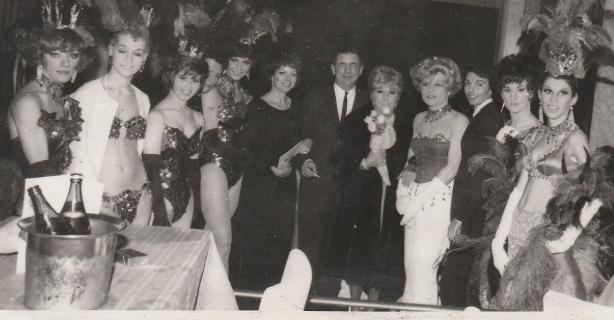 | ||
Photo from Mark Trevorrow 2021: taken at Les Girls in Sydney in 1964 - It’s FRANCES! With the queens from Les Girls! Les Girls in Kings Cross was a couple hundred yards from the Chevron Hilton where Fran would’ve been playing in the Silver Spade room. know it’s June 1964 because Judy was in Aus the same time - Fran defended her against the nasty media treatment after the disastrous Melbourne show. Weirdly the Beatles made their only Australian tour that exact same month! 64 was the year Australia finally lost its isolation and joined the world - thanks to satellites and the Boeing 707!! Far right is Carlotta - now 77. The photo was kept by Stan Munro (peeking out 4th from left) not in drag this night but a legendary drag performer of the era. Carlotta hadn’t seen this photo for nearly 60 years and when I showed it to her she casually said “oh yes, I did Frances Faye’s hair and makeup when she was in Sydney.” WTF?!?!? Which explains Fran’s incredible new mod look that year, her second Australian visit!!! I Fran will have been brought to the Les Girls show by the man & woman to her left: Gordon Chater local comic superstar of TV & revue) and Dita Cobb (local radio & TV personality)! Gordon & Dita are to OUR left, Fran’s right. What’s so special is that I know a lot of the queens of the era who are able to ID each and every one of the Les Girls performers. So amazing about FF’s new mod 60s look and Carlotta’s involvement in it!! Always wondered about the change - of course it would happen in Sydney!! (Carlotta had been a lover of a teenaged Peter Allen according to the biography "The Boy From Oz.") | ||
LATE CAREER
In the 70's an even more uninhibited Frances Faye kept the party going, playing to ever more liberated and out audiences. After years of agony, Fran finally recovered completely from the fall that broke her hip at the Riviera in '58. She no longer needed a cane or crutches to walk, "I didn't walk for nearly eight years. I screamed day and night and they gave me so many pills to keep me quiet and now, God is good, I don't even take an aspirin" (Over Easy, 12/77). She toured a great deal and was at London's Talk of the Town again in 1970. It was around then in Chicago that funnyman Bruce Vilanch was so taken by Faye's comedic style that he made sure pal and employeer Bette Midler caught Fran's act, "When I first started working with Bette, I showed her a lot of people. I mean I took her to see Frances Faye...all these people who were so free on stage, it was like a party. I said, 'This is what your show should be like'" (Get Bruce). While in Chicago, Fran put it this way, “It’s funny how things change, for years, a lot of people thought of me as a dirty performer, that my material was rough. Well, there’s nothing dirty about my act, and there never was. In fact, I can do the whole thing on television now and nobody would bat an eye...See, taste and talent are what count in the final run, those are the things that last" (qtd. in Bob Ellison, 2-27-70). Changes in music and the culture made these lean years for nightclub performers of all kinds. Throughout the decade, Faye found herself mostly booked in predominatly gay clubs and camped up her act with quips like, "the next song is for Johnny Mathis wherever she is...". Faye even served as a judge for a Drag Ball, "I gave them all 10's. Some of those queens had been sewing for months. Was I going to put them down? Never!"
In 1974, Fran played L.A. for the first time in a decade, then October 1975, saw her return to NYC to play the Spindletop. It was her first club date in NY since Basin Street East in 1964 and once again her act was a success and had to be held over. She had truly rave reviews from the NY Times, the Post (Faye is something of a national Monument, you pay her a visit with the reverence one reserves for a trip to the Louvre...Her hair is cropped so short she must comb it with a toothbrush. A slash of fire-engine red for a mouth, two enormous black olives for eyes...and a riot of jewels that bounce through the night like searchlights...her looks are so startling that you almost forget how talented and musically creative she is - Rex Reed), and this from After Dark: "one of the most underrated cabaret artists in the United States today...a lady in her 60's, has the energy of a 15-year-old and is a consummate artist... Her musicanship, as she tinkles the ivories while improvising with her backup quartet, is impeccable... This lady has kept up with the times... When I asked Miss Faye where she was playing next, she replied, 'The cemetery.' Well, with that gig, I must catch her return" (Weiner 2/76).
In 1976 she was still very much alive and in London at the Palladium sharing the bill with a tired Johnnie Ray, lounge crooner Billy Daniels and the Ink Spots; "Frances Faye, with less than a chart impact in her background than the others, nevertheless produced a larger-than-life performance with a line of gags right out of the Mae West mold" (Peter Jones, 8-21-76). Her act was ever changing, but rave reviews of her appearances were constant. At San Francisco's Macambo Fran opened with a conga backed 'What Now My Love;' bemused the audience when she put a new twist on one of her signature tunes with 'Bewitched, Bothered, and Bea Arthur,' did an extedned version of her swinging and jazz based medley of 'Summertime; and 'It Ain't Necessarily So' that she had triumphed with on 'The Joey Bishop Show,' and offered a wild take on Barry White's tune 'Ecstasy.' Due to Fran's continued popularity, many of her albums stay at the legendary Studio One in LA. Part of that show was filmed and worked into the TV movie about gay runaways "Alexander: The Other Side of Dawn." "When I was at Studio One, it was really wild, I was singing with my group, and it was really hot and together. And all the young kids, they loved me. They got up and danced, and whistled and screamed and it was really very gratifying, believe me. It was very heartwarming" (Peter Bankers). Jazz critic Leanord Feather wrote after seeing one of Faye's 1978 shows at Studio One, "...If you take the Faye components apart, they are not easily explained or reassembled. Her voice is loud and course, her piano style harmonically basic, yet when she pulls it all together, it spells charisma...Sizing up her audience, she sang 'As Long As She Needs Me' and a segment of 'The Man I Love' with feminine pronouns replacing the masculine...Serious illnesses, changes in public taste, generation gaps have failed to slow Frances Faye down. She is the consummate nightclub performer, time proof, 200-proof and obviously indestructible."
Louis Malle and Polly Platt caught the Studio One show and the next day cast Frances as the madam in "Pretty Baby," Malle's debut American film. It was a nice sized part and a juicy role. Frances spent 3 months in New Orleans filming where she allowed her appearance to be transformed into quite a fright for the part, "I got $250,000. The picture opens with me in bed smoking an opium pipe with a wig half off my head" (Wilson 11-17-78). Gene Siskell wrote that Faye looked, "like death wrapped in a housecoat." In the film she was given the great line, "There are only 2 things to do on a rainy day, and I hate to play cards," and the privilege of denuding the prepubescent Brooke Shields. Everyone making the film was lodged in the decaying St. Charles Downtowner near to the Columns Hotel where the film was shot. The poor food, skin infecting mites, smell and unsavory hotel patrons were endured by all. In that atmosphere interviewer Peter Bankers found, "the indomitable Frances Faye filling the halls with joyous laughter. She glows." Later, Frances recalled, "When I played that part they made me a long fingernail so I could pick up coke, and that's not my bag, so when it came time to do it, we had a few laughs...then I had to smoke an opium pipe which was even funnier...I said to the director who is French and a Scorpio, Louis Malle, 'What do I think about when I smoke this long pipe?' He told me. We did THAT scene a few times. Everytime I had a few days off the movie Louis couldn't make it. He said, 'Fran without you it's not the same.' He knew." Frances further explained that Malle was "a beautiful, beautiful man. He's with it. But you must be beautiful to work with Louis Malle because Louis Malle is a very together man and his imagination is not to be believed. He has wild good taste. What he wants, he manages to bring out in you. I know that he knows what he's talking about and I obey him" (Bankers).
Malle recallled casting and working with Faye, "who is an extraordinary comedian, singer, and a wonderful woman... she’s got this extraordinary sort of impressionist face: and when she snorts cocaine, she’s just fabulous, except that she just couldn’t memorize anything. We would have to do twelve takes for her to say, ’Shut the door.’ She just couldn’t remember anything. I had a lot of problems with her. I had to cut scenes. She had a very strange rhythm sometimes. She was a mixed blessing. If I were to do it again, I’m not sure I would cast her becauses she really gave us a lot of problems and forced me to make some changes in the shooting that I regret because it was a wonderful part. Better actually than it is. Seeing it again today, I must say I felt good about her because she’s great, she’s just a wonderful character" (Film Voices). A 1981 review in the New York Times read, "...There hasn't been a screen performance this hair-raising since Frances Faye played a madam in 'Pretty Baby'" (Janet Maslin). During the filming in New Orleans Jerry Wexler produced Faye's last studio recordings which circulate privately in fan collections.
In 2007, David del Valle remembered vividly Frances during the 70's: " In 1977 the hottest nightspot in LA was the STUDIO ONE BACKLOT THEATRE. It was there that I got to see legends like Eartha Kitt and Barbara Cook perform their nightclub acts that only devotees on the east coast usually got to savor and enjoy. At some defining point that year a TV movie of the week entitled ALEXANDER, THE OTHER SIDE OF DAWN was filming in and around West Hollywood using the infamous gay cabaret in their story line, and I for one will always be grateful that they included the then-current act which was, of course, the staggering Frances Faye (and the ‘Live If You Can Take It’ revue). It is worth renting this rather tired soap opera involving a small town hunk who arrives in Hollywood on a Greyhound bus and guess what - winds up selling his ass on Hollywood blvd before finding true love with a small town girl who also happens to be a hooker (the “Dawn” character we are on the other side of -- I told you it was a movie of the week-- ).
Anyway the director, John Erman, allowed me to be part of the working audience while they were filming, and Frances was up there banging madly away on her piano when it was brought to her attention that Tab Hunter was in the audience so, without missin a beat, she launched into her version of “Red Sails in the Sunset,” a tune once recorded by Tab in his teen idol period.
Frances was held in a state of awe by the waiters and busboys of the club for an incident that occurred during this run when, overcome - she passed out over the keyboards, but before the paramedics could be summoned she came out of it and started singing right where she left off --talk about being professional -- She was one of a kind. I was quite a late bloomer when it came to being hip to her wild scene, as Frances Faye has been a world famous best-kept-secret for the last half of the 20th century. This woman, who inspired Peter Allen to be a performer, was an influence on most of the musical talent of the last five decades, including The Beatles, Judy Garland, and Sammy Davis Jr., not to mention Bette Midler. They all saw Frances Faye perform and it blew their minds.
Frances Faye was pro-gay before anyone knew or cared to know what gay meant. All the jazz greats lined up to work with her, such was her reputation. After I saw her act here at the Backlot (and I mean I saw every performance), the great French director Louis Malle and his designer Polly Platt (the former Mrs. Peter Bogdonovich) came to see Frances and soon after cast her in his film PRETTY BABY (1978) in a pivotal role as the coke- snorting madam who first places child prostitute Brooke Shields up for sale. My old friend and former client Barbara Steele had given the STORYVILLE novel, on which the film is based, to Malle as a possible film project years before when she was involved with Louis romantically, and as a result Barbara was rewarded with a small role in the film as well. It was Barbara who first told me of the wild, wild nights at the old St. Charles hotel in New Orleans where the film company was quartered: Frances Faye, well into her seventies, her girlfriend in tow, held court in her hotel suite filled to the rafters with musicians and crew doing bags of coke, yelling “Eat my pussy” at the top of her lungs, as the divine Faye could care less what other people thought of her. Barbara remembered fondly her first encounter with the diva: “I can’t tell you how many times I had to remove Frances’s hand from my leg, as she always made a passes at me, and listen, I was flattered, but still she was older than my grandmother.” When the film was done and Barbara returned to LA we all went back to STUDIO ONE to see her again. There is just no way to capture the party-like atmosphere this entertainer could create -- Her candor may have cost her mainstream immortality but she deserves her place in the sun as a truly one of a kind entertainer." (http://filmsinreview.com/Features/CampDavid/jan07-1.html).
Pressed to descibe herself Fran said, "I live a very quiet, romantic life and I'm into music all the time... I live very quietly, but when I get on stage I'm real hot. So, it's a gas in a way, it really is - I love it. I live in two different worlds. I'm a real housewife at home. I'm always dusting. When you're Jewish you have to dust. I am very meticulous, though, and I like people around me to be that way too. I don't have very many people around me. I'm very fussy. I'd rather be with my French poodles than people, because they don't bug me." Her interviewer found, "Frances Faye the individual is quite shy and modest, and too shy to even write about her life on stage and what happens when she gets onstage. She's like Jekyll and Hyde" (Bankers). In an interview taped in 1974, Faye was asked to create an oral history documenting her career in show business for posterity.
Early in 1978, Frances suffered a heart attack and received a pacemaker but that fall she was back on tour. "I nearly did die once. When you're in intensive care for 4 weeks you think of a lot of things you did in your life. I did everything but one thing, and I can't tell you what it is, you'll flip! ...When I had my heart attack I felt like I had 40 men sitting on me, not 40 people, 40 big men...got over pneumonia four times, broke my hip, had three major surgeries, it was laughs every minute." Fran spent six weeks working in London and then in November, Frances was back in New York taking over the notorious disco Hippopotamus. Despite her fragile health, Fran's shows were wilder than ever. They were upbeat, energetic, and attuned to the zeitgeist as demonstrated by her outlandish and camp asides to the audiences. It was a truly impressive late career achievement when at the very height of the disco craze, Faye knocked Donna Summer right off the dance floor by bringing her act into one of Manhattan's most celebrated dance clubs. John Wilson's glowing New York Times review captures the spirit of her act: "... a carefully crafted disarray. Miss Faye ... is at Hippopotamus, which, until her arrival was a discotheque. But now there are tables on the dance floor, ... a sound system that once throbbed with a disco beat and this week and next, Miss Faye running through the musical stream of consciousness that has been her hallmark for more than 40 years. Some songs are given no more than a line. "I'm not much to look at," she sings, and adds with a shrug, "You know the rest." In a moment she is singing, "Was I gay, till today," ... Miss Faye leaves it hanging there along with other "lines from songs I never recorded." When she plays "Lonesome Road," it turns into "Jingle Bells." But a theme from "Rhapsody in Blue" remains intact and "Goin' to Kansas City" opens the door to some lustily shouted blues. Miss Faye leaps from song to song, from line to line with such a fast-breaking shiftiness that, at her opening on Tuesday evening, the four young musicians who had just joined her had trouble keeping up. But Miss Faye is dauntless. She merely added musical cues and stage directions to her customary flow of seeming non sequiturs and forged ahead on her own" (11-16-78).
Frances returned to Australia for the tenth or eleventh time in 1979. She appeared at clubs in Sydney and Melbourne and on three TV programs. She was high energy, sounded great and looked wonderful, "like a sequined piece of driftwood." They would be her final TV performances. Faye continued working in caberet until 1981 when she finally retired. Her last show was in San Francisco, just a year after some memorable wild concerts she gave there at the Old Waldorf. Peter Allen payed this loving tribute to his early mentor, "Frances Faye, who started me off in Australia as an opening act, was always real 'real' and honest and brilliantly funny . . . and 20 years ahead of her time. She got cursed with the gay image and nobody would book her. And Bette Midler is practically doing her act and I'm practically doing her act and it'll be because of those elements that people now find it interesting." (7-30-82, Wash Post)
In 1984, Frances suffered what was to be the first in a series of strokes. For a while afterwards, as recalled in "Chop Suey Club," the only word Fran could pronouce clearly was: f*ck. Stephen MacLean wrote, "some time before he died Peter Allen rang Frances Faye because his assistant Bruce was so enamored of her and as Bruce listened in on the line to whatever questions Peter asked - How are you? -'F*cked!' - The dogs? - 'F*cked!' - That property you sold? - 'F*cked!' ad infinitum. Bruce and Peter had obsessively tried to find sheet music on DRUNK WITH LOVE, but almost like Frances herself, could find no trace it ever existed except from her recording." Frances hung arouond for 10 more years after retirement and died on Nov. 8, 1991. Brother Marty Faye had pointedly quipped in Time Magazine in 1957 that Frances wasn't his sister, she was his father! His hometown newspaper later amusingly erred when Fran died, "Her legion of Chicago admirers are mourning the death in L.A. of Frances Faye, 79, the singer-pianist who brightened many a nightclub. She was the brother of Marty Faye." The next day in Kup's Column there followed the correction: A garbled item here didn't make clear that singer-pianist Frances Faye, who died in L.A. this week, was the sister of retired deejay Marty Faye" (Chicago Sun-Times, November 12, 1991). Herb Caen's San Francisco obituary read,"Frances's signature chant was 'go-go-go' and I'm sorry she went" | ||
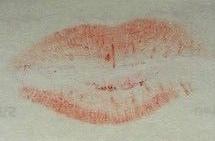 | |||||||||||
Letter to Essie Kupcinet including a lipstick kiss: | |||||||||||
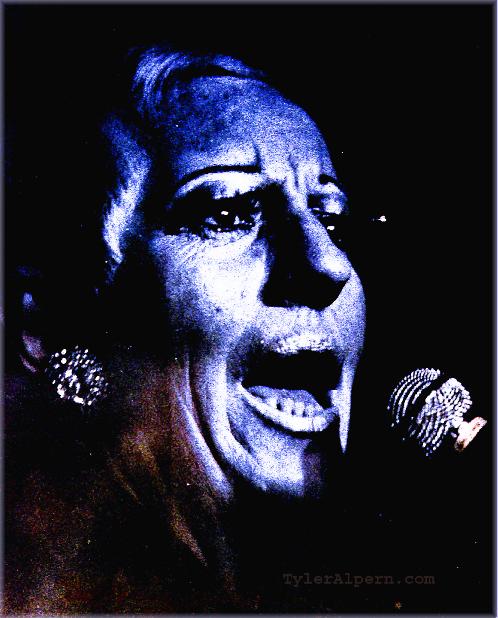 | |||||||||||
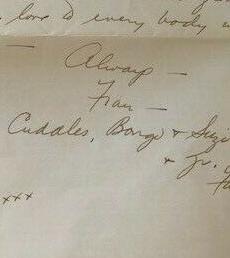 | |||||||||||
Fran signed her famous poodles' names along with hers. She included their names in "Frances and Her Friends. | |||||||||||
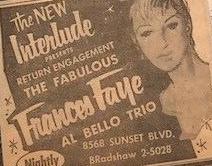 | |||||||||||
| ||
Fran's earnings are quoted many times in this article and these facts will help put them in perspective: In 1930, $100 was equivalent to $1,801 in 2024. In 1940, $100 was equivalent to $2,148 in 2024. In 1950, $100 was equivalent to $1,248 in 2024. In 1960, $100 was equivalent to $1016 in 2024. In 1970, $100 was equivalent to $775 in 2024. Sources WORKS CITED on this websitet - email for more details.
Copyright Tyler Alpern 2001 - 2024 Sources and photo credits upon request. The website's content is copyrighted. No material from the site may be republished, copied, posted, rewritten, printed, photocopied, broadcast, publicly displayed, or distributed in any way without prior written permission except that you may view many of the site's pages with a web browser and you may print a single copy of those pages for your personal, noncommercial, home use.
FOR MORE FRAHNCESS... YOU GOTTA CLICK! CLICK! CLICK! | ||
 | ||
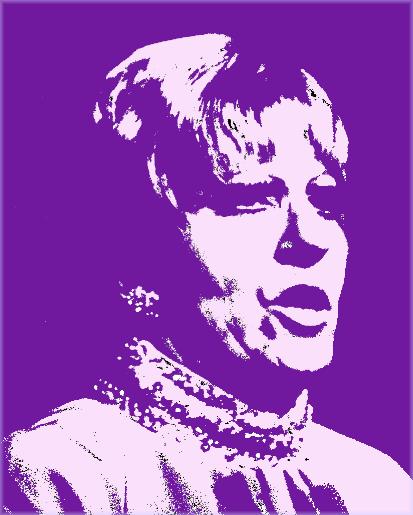 | 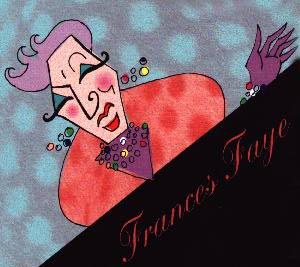 | |||||
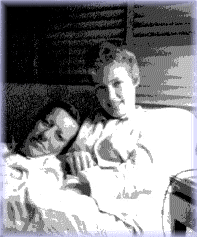 | ||||||
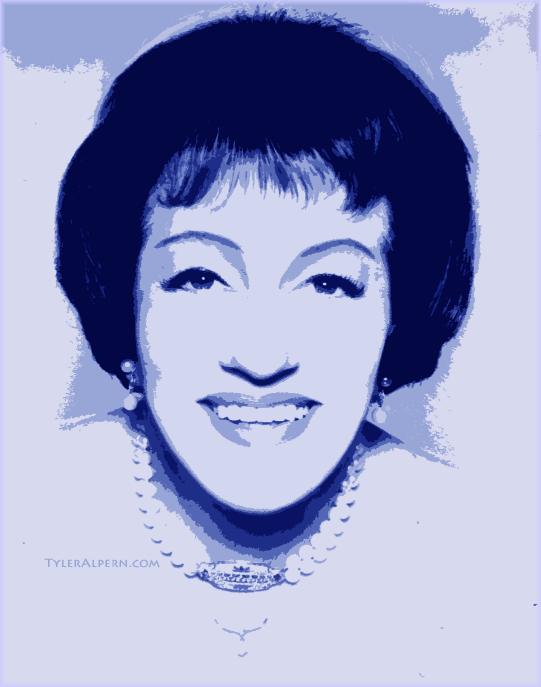 | ||
CLICK HERE to contribute to or comment on the site!
| ||
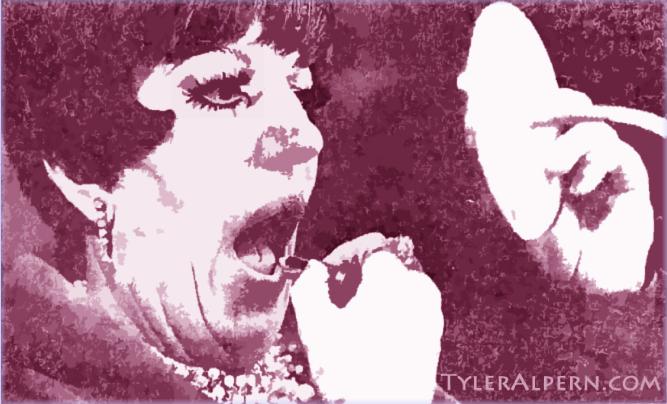 | ||